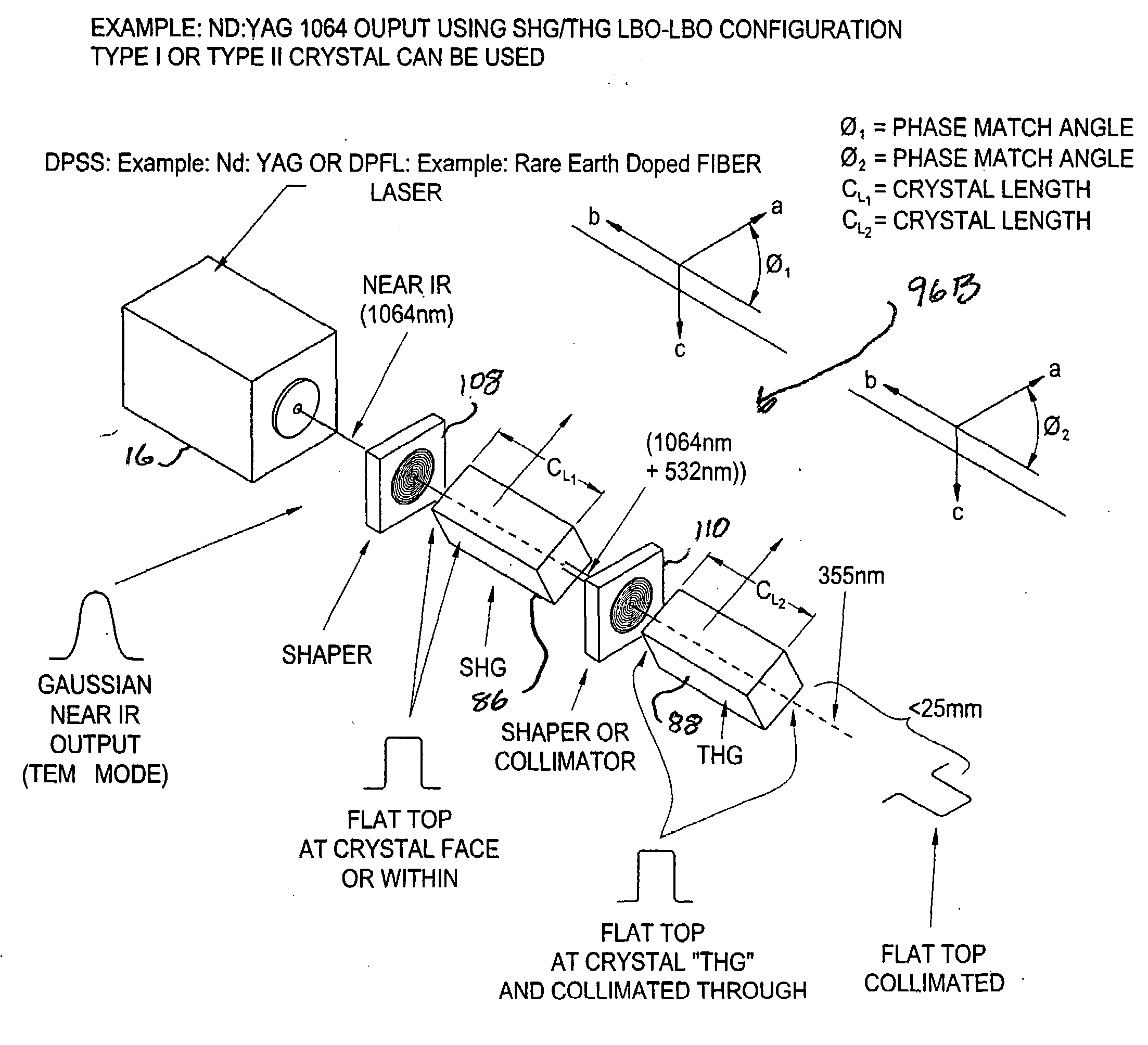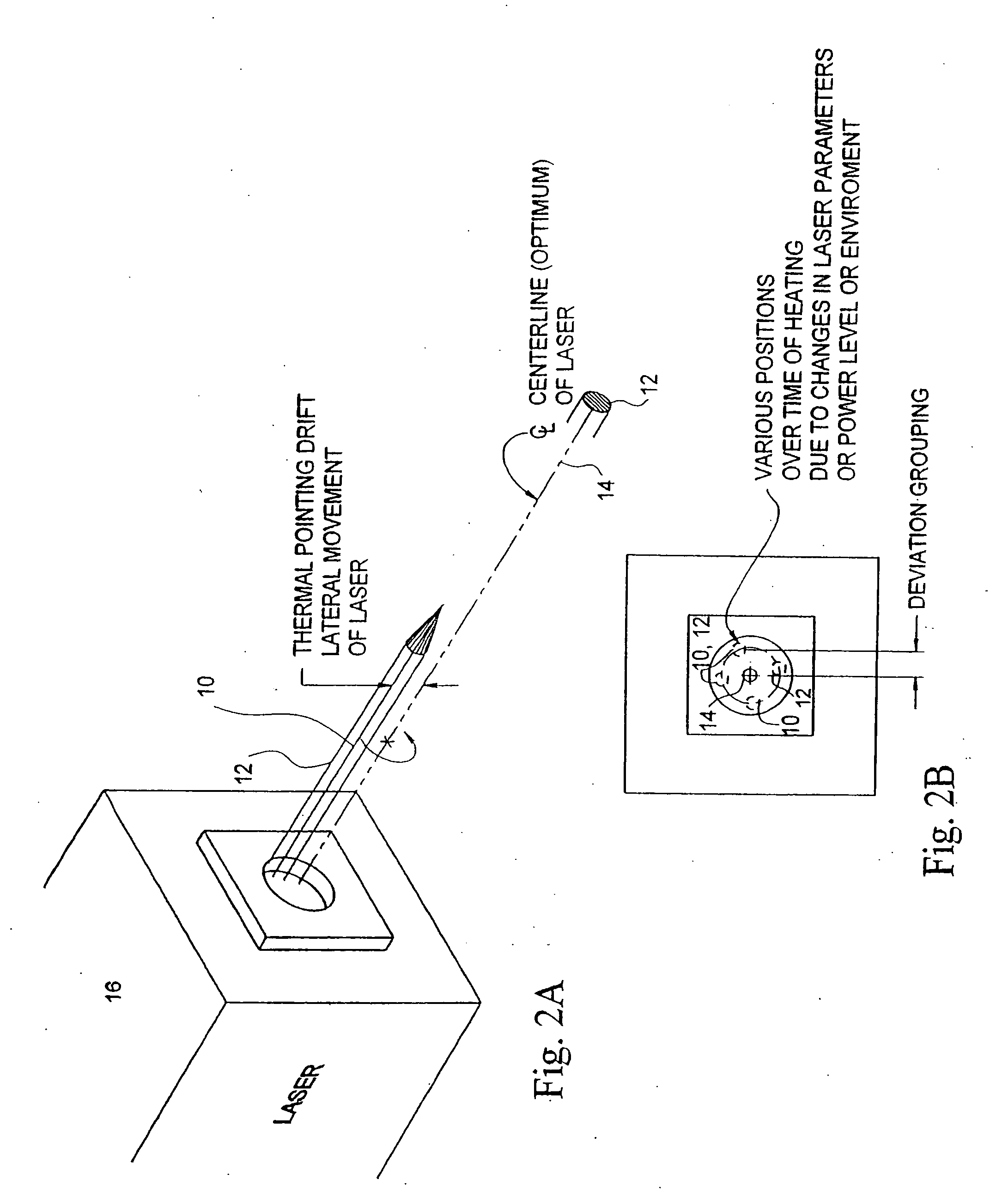Beam shaping prior to harmonic generation for increased stability of laser beam shaping post harmonic generation with integrated automatic displacement and thermal beam drift compensation
a beam shaping and harmonic generation technology, applied in non-linear optics, instruments, lenses, etc., can solve problems such as “hot spots” or beam profile distortion, affecting reliable and controllable processes, and reducing the energy distribution profile of beams. , to achieve the effect of reducing the peak energy distribution profile of the beam and the generation of harmonic elements
- Summary
- Abstract
- Description
- Claims
- Application Information
AI Technical Summary
Benefits of technology
Problems solved by technology
Method used
Image
Examples
second embodiment
[0054]As illustrated generally in FIGS. 6 and 6A through 6F, either or both of radial displacement due to thermal drift and angular deviation due to pointing instability may be corrected by means of a Non-Symmetric Element (NSE) 28 as illustrated in FIG. 6. As illustrated therein, an NSE 28 may be, for example, a Non-Symmetric Hologram Optical Element (NSHOE) or an equivalent optical element, such as a non-symmetric lens or a non-symmetric refraction element or a non-symmetric diffraction element. As indicated, an NSE 28 differs from a SSHOE 18 or equivalent symmetric element in that the path of the Beam Axis 10 of a Laser Beam 12 traversing the NSE 28 is refracted, or turned, through a Correction Angle φ during the passage of the Laser Beam 12 through the NSE 28. As will be discussed further in the following, in one embodiment of a NSE 28 the angle φ increases with increasing radial displacement Δ of the incident Beam Axis 10 from the Centerline Axis 28C of the NSE 28. In a NSE 28,...
first embodiment
[0060]In either instance, and as may be seen from the above discussion of angular deviation geometry, the magnitude of the Correction Angle φ must therefore increase with either increasing radial displacement Δ or with decreasing angle of incidence α. In an Angular Correction NSE 28A, therefore, the Angular Correction NSE 28A, which may be, for example, a NSHOE or equivalent non-symmetric lens, is designed such that the Correction Angle φ increases proportionally to the radial distance from the central axis of the Angular Correction NSE 28A. As described, therefore, the greater the angular deviation θ of a Beam Axis 10 the greater the radial displacement Δ of the Beam Axis 10 from the central axis of the Angular Correction NSE 28A and the greater the Correction Angle φ.
[0061]In a second embodiment of an Angular Correction NSE 28A, the Angular Correction NSE 28A may be designed such that the Correction Angle φ increases with a decreasing angle of incidence α, that is, with an increas...
PUM
| Property | Measurement | Unit |
|---|---|---|
| angle of incidence | aaaaa | aaaaa |
| distance | aaaaa | aaaaa |
| wavelength | aaaaa | aaaaa |
Abstract
Description
Claims
Application Information
 Login to View More
Login to View More - R&D
- Intellectual Property
- Life Sciences
- Materials
- Tech Scout
- Unparalleled Data Quality
- Higher Quality Content
- 60% Fewer Hallucinations
Browse by: Latest US Patents, China's latest patents, Technical Efficacy Thesaurus, Application Domain, Technology Topic, Popular Technical Reports.
© 2025 PatSnap. All rights reserved.Legal|Privacy policy|Modern Slavery Act Transparency Statement|Sitemap|About US| Contact US: help@patsnap.com



